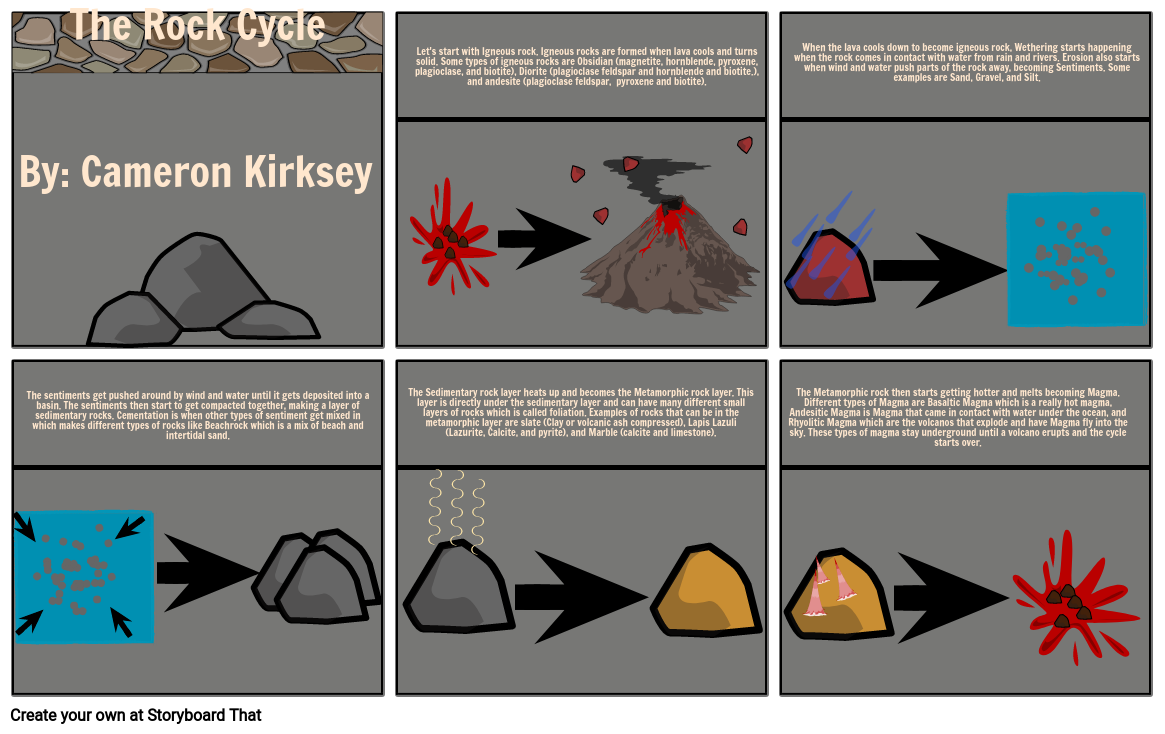rock

Text z Príbehu
- By: Cameron Kirksey
- The Rock Cycle
- Let's start with Igneous rock. Igneous rocks are formed when lava cools and turns solid. Some types of igneous rocks are Obsidian (magnetite, hornblende, pyroxene, plagioclase, and biotite), Diorite (plagioclase feldspar and hornblende and biotite.), and andesite (plagioclase feldspar, pyroxene and biotite).
- When the lava cools down to become igneous rock, Wethering starts happening when the rock comes in contact with water from rain and rivers. Erosion also starts when wind and water push parts of the rock away, becoming Sentiments. Some examples are Sand, Gravel, and Silt.
- The sentiments get pushed around by wind and water until it gets deposited into a basin. The sentiments then start to get compacted together, making a layer of sedimentary rocks. Cementation is when other types of sentiment get mixed in which makes different types of rocks like Beachrock which is a mix of beach and intertidal sand.
- The Sedimentary rock layer heats up and becomes the Metamorphic rock layer. This layer is directly under the sedimentary layer and can have many different small layers of rocks which is called foliation. Examples of rocks that can be in the metamorphic layer are slate (Clay or volcanic ash compressed), Lapis Lazuli (Lazurite, Calcite, and pyrite), and Marble (calcite and limestone).
- The Metamorphic rock then starts getting hotter and melts becoming Magma. Different types of Magma are Basaltic Magma which is a really hot magma, Andesitic Magma is Magma that came in contact with water under the ocean, and Rhyolitic Magma which are the volcanos that explode and have Magma fly into the sky. These types of magma stay underground until a volcano erupts and the cycle starts over.
Bolo vytvorených viac ako 30 miliónov storyboardov
Na Vyskúšanie nie je Potrebné Žiadne Sťahovanie, Žiadna Kreditná Karta a Žiadne Prihlásenie!

